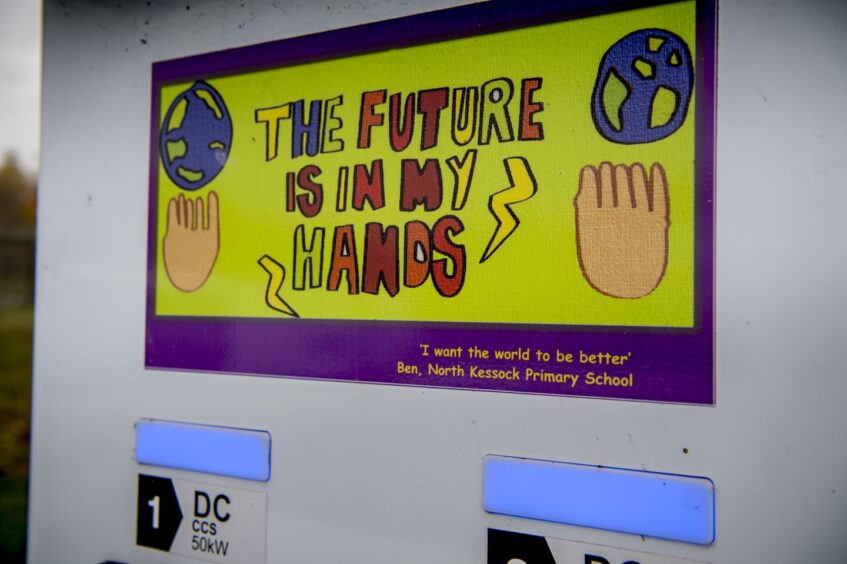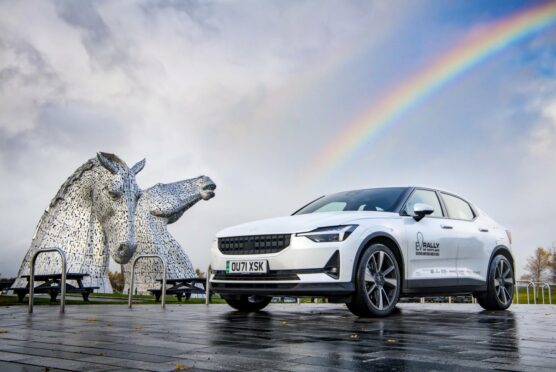The Beast. That’s what they were calling the third day of the Electric Vehicle Rally of Scotland (EVROS).
We would be covering more than 320 miles on roads that twist, wind, turn and crawl through some of Scotland’s most majestic scenery.
Our purpose: to find out whether you can do huge journeys through remote parts of Scotland in an electric vehicle.
EVROS took place over five days last week and was designed to coincide with the COP26 climate conference in Glasgow. The rally saw 23 electric vehicles cover a sweeping 1,200 mile loop of the country.
Myself and my partner Eilidh took part in days three, four and five. We were guests of Polestar, an electric vehicle company owned by Volvo.
Going electric
Our steed was the Polestar 2, a fully electric five door hatchback. Its official range is 298 miles and our dual motor version was four-wheel drive.
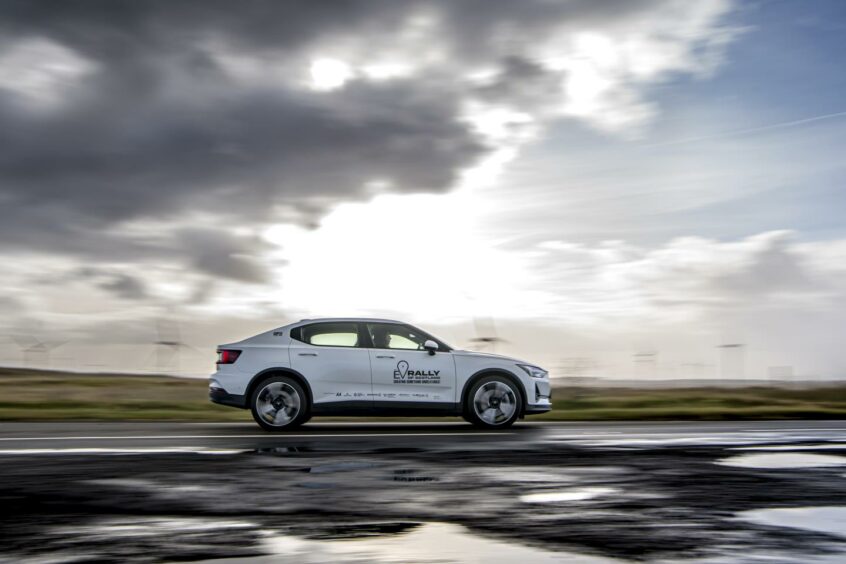
Our first day started bright and early. We were up at 6.30am and had a driver briefing over breakfast at seven. By eight we were at the wheel and raring to go. Our stunning route took us along part of the Great Glen, through Glen Garry, across to Skye then onwards up the northwest coast to Thurso.
It would be a day filled with valleys and gorges, craggy mountains, lochs, forests and dramatic stretches of coastline.
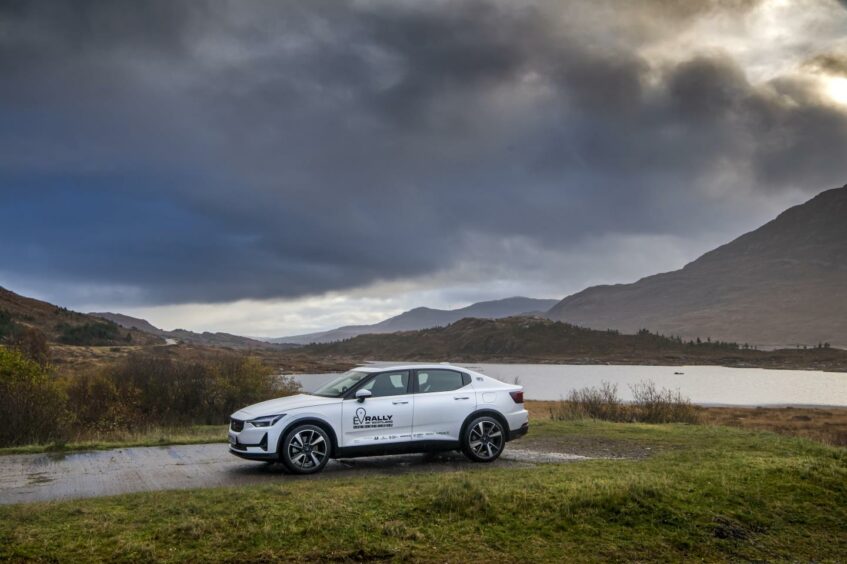
Polestar’s pro driver, David, informed us that the best way to stretch our range was to switch the heating off. “Put an extra jumper and a wooly hat on,” he advised us cheerily.
“We will,” I assured him, before setting the climate control to 23 degrees and whacking on the heated seats and steering wheel the moment he was out of sight. This is the Highlands in November and I intended to remain warm.
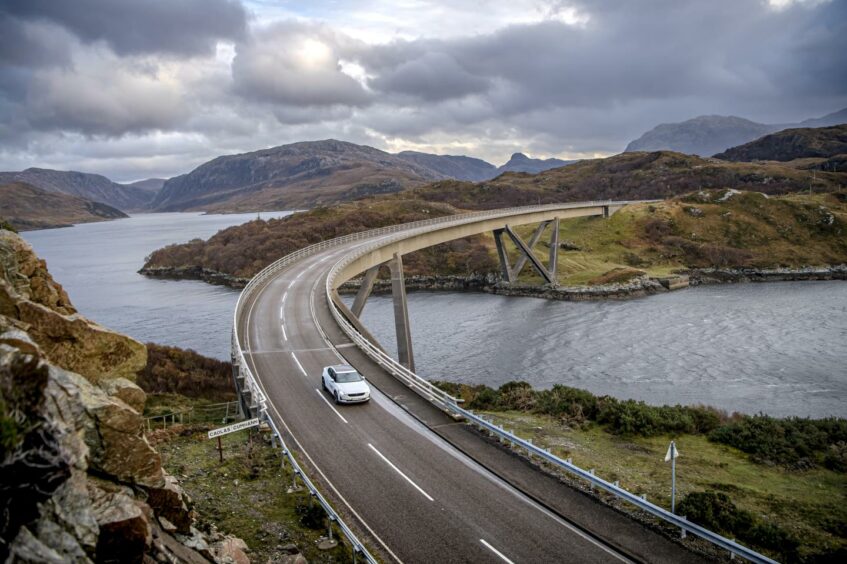
David’s other piece of advice was to charge “little and often” and this was counsel we did attempt to follow. Our Polestar’s sat nav had a full list of charging points mapped out. Wherever possible we tied in toilet breaks and snack stops with a quick burst of juice for the battery.
Charging up
We plugged in at Kyle of Lochalsh, Ullapool, Scourie and a lovely little village called Bettyhill. Apart from the first stop, each had 50kW chargers available, which are (generally – more on that later) the most powerful available in Scotland. There are 7kW slow chargers but they’re designed to be used overnight.
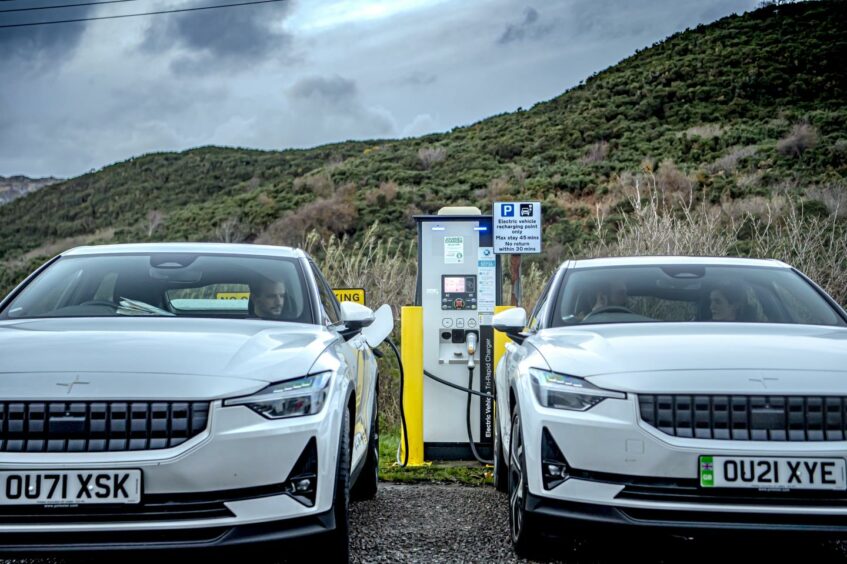
Everything worked smoothly, with the exception of Ullapool where one of the town’s two charging stations was broken. Just what you need when 23 electric cars are doing the same route at the same time. We joined a line of five EVs and waited our turn, departing two hours later with our battery topped up enough to reach the next charger.
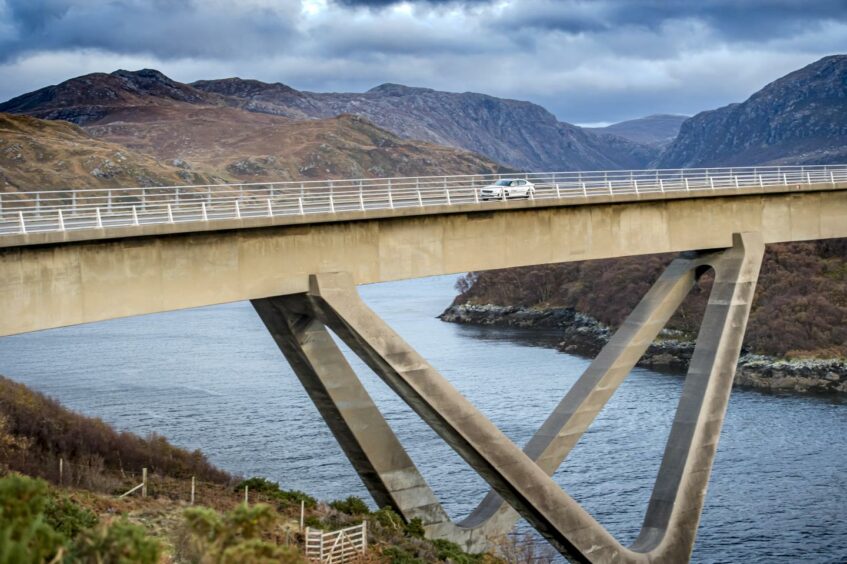
We arrived in Halkirk, just south of Thurso, tired and hungry but happy at 8.15pm – just over 12 hours after we set off. Over the course of the day we had seen some of Scotland’s most amazing scenery and I was ready for a burger and a beer.
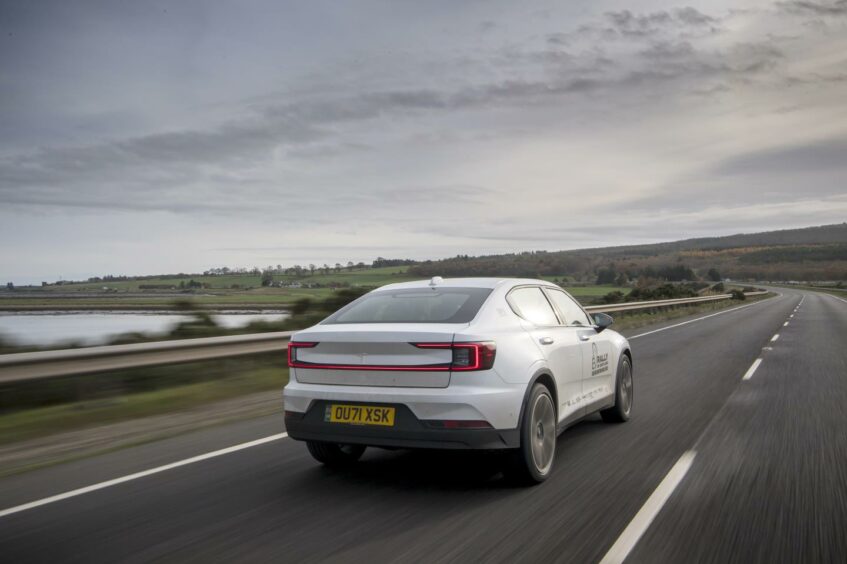
After a good night’s sleep and a bit of cable-out-the-window trickle charging we were good to go again. By 10am we were at John O’Groats and we remained there for two minutes of silence at 11am to mark Armistice Day.
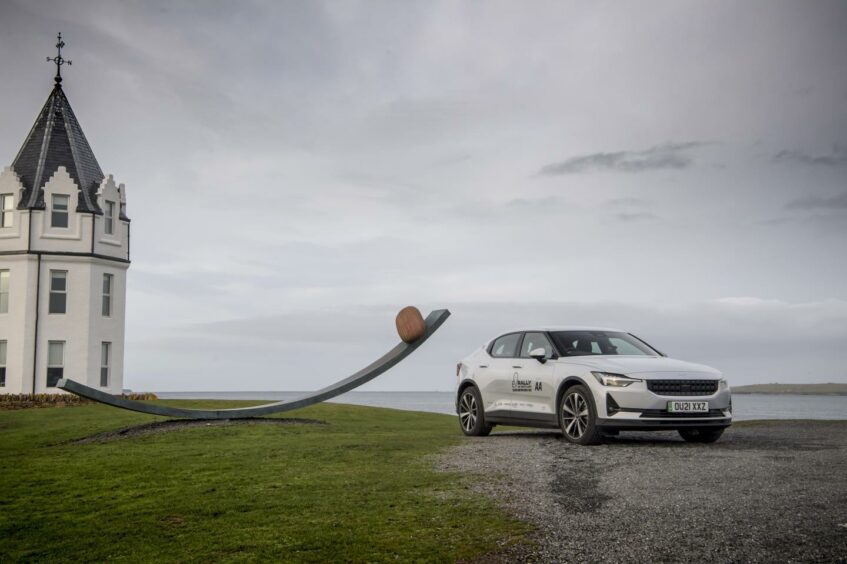
From here the going became easier. The roads were faster and charge points more numerous. We finished in Aberdeen with 50% battery and topped up overnight.
Race to the finish
By 10am on Friday we arrived at Dundee’s Michelin Scotland Innovation Park where a major COP 26 event was underway. After a half hour poking around hydrogen and electric concept cars and green technology stalls we had to move on.
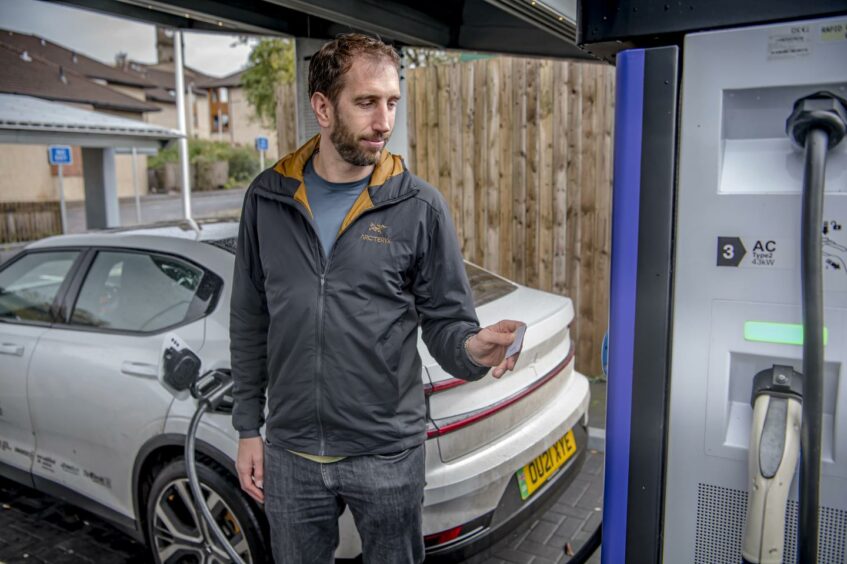
A quick plug in at the Dundee charging hub, coffee and cake at the V&A and we pointed our nose towards Falkirk.
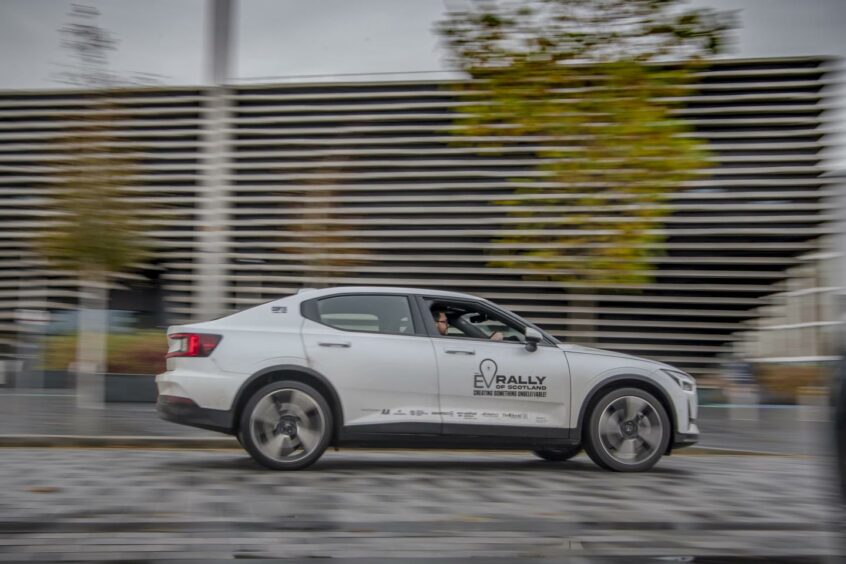
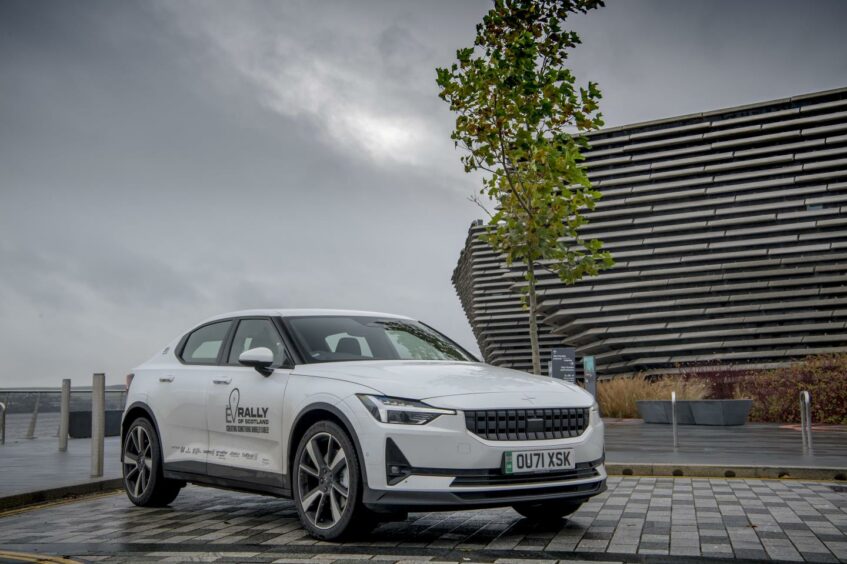
We checked in at the Kelpies, where a rainbow suddenly reared above the huge sculpture of mythical horses. Then it’s the M8, where we plugged into Scotland’s first ultrafast 150kW chargers. These hurl charge in at a tremendous rate and by the time we’d had a sandwich the battery was almost full. If we want electric cars to be the future we really need lots more of this strength of charger, as well as EVs that can accept such high charge rates, such as the Polestar 2.
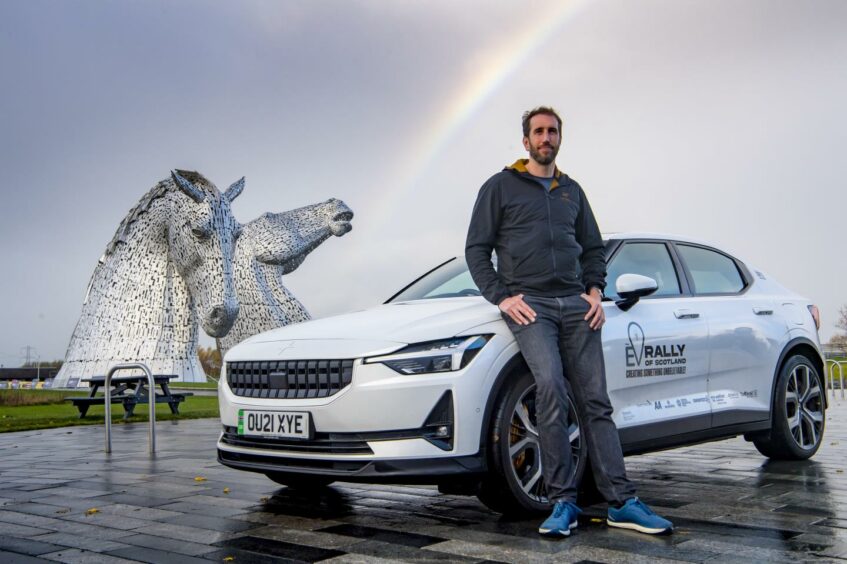
Half an hour later we crossed the finish line in Glasgow – timed to coincide with the final afternoon of COP26 in the city.
With the exception of a small snafu at Ullapool (and that only an issue because of more than 20 EVs in convoy) keeping our car charged up was simplicity itself. And we covered more than 750 miles in three days without emitting a single gram of CO2.
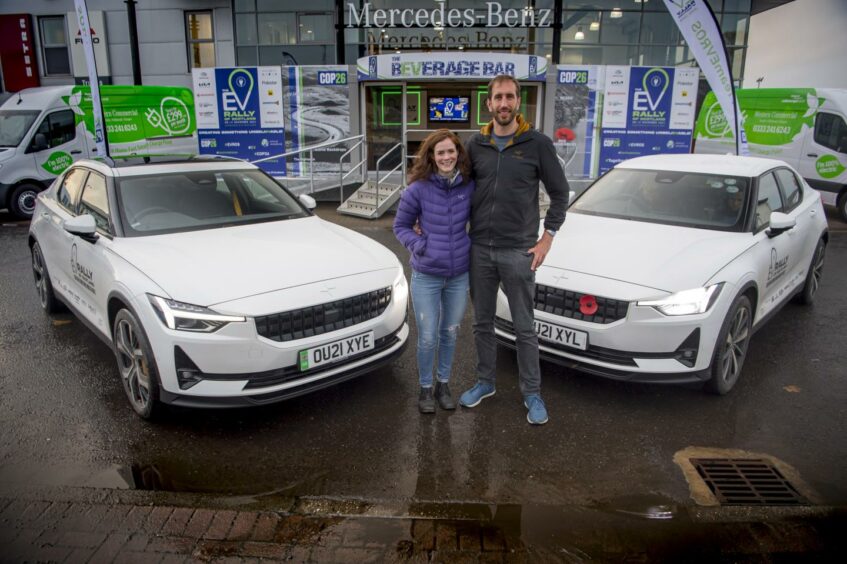
We need to move away from petrol and diesel power urgently to help prevent a climate crisis. EVROS showed this can be done without making any real sacrifices in our driving styles.
